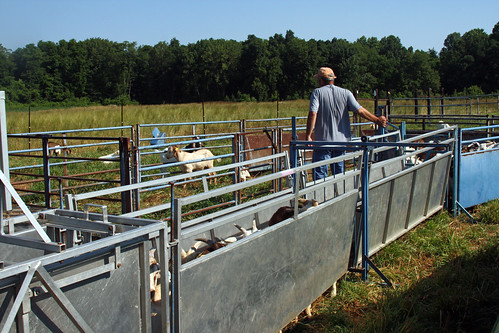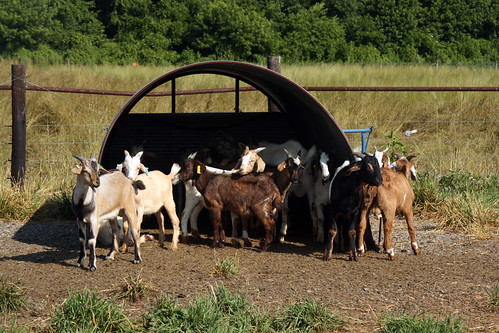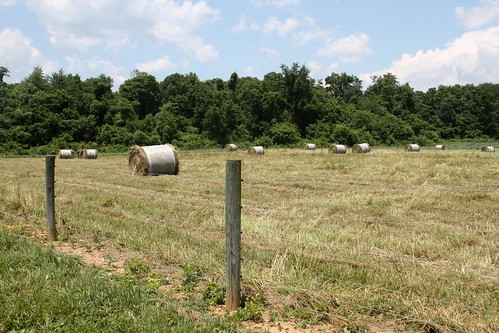 Dr. Dahlia Jackson and her graduate student collected fecal samples and recorded data. Dr. Jackson will determine fecal egg counts at Delaware State University and send a pooled fecal sample to the University of Georgia Vet School for a larval development assay (LDA).
Dr. Dahlia Jackson and her graduate student collected fecal samples and recorded data. Dr. Jackson will determine fecal egg counts at Delaware State University and send a pooled fecal sample to the University of Georgia Vet School for a larval development assay (LDA).While the goats only lost an average of 0.04 lbs. during the 13-day adjustment period, the range of weight gain and loss was wide, ranging from -0.69 to +0.54 lbs. per day. There was considerable variation among goats from different consigners. Growth performance will be calculated from the weights taken on June 20.
 FAMACHA© scores were mostly 1's and 2's, with a few 3's. They averaged 1.65 as compared to 2.24 on June 7. This improvement was expected as the goats were dewormed with moxidectin (cattle dose) and levamisole (1.5x sheep dose) upon arrival. The three goats that had FAMACHA© scores of 4 improved by 2-3 scores.
FAMACHA© scores were mostly 1's and 2's, with a few 3's. They averaged 1.65 as compared to 2.24 on June 7. This improvement was expected as the goats were dewormed with moxidectin (cattle dose) and levamisole (1.5x sheep dose) upon arrival. The three goats that had FAMACHA© scores of 4 improved by 2-3 scores.Weather conditions are now ideal for development of the barber pole worm: warm and moist. Temperatures are mostly in the 80's, a considerable improvement over the first week of the test. The goats make good use of the port-a-hut shelters and always have access to cool, fresh water. Their minerals contain Rumensin®.
 While a few goats lost body condition, body condition scores (BCS's) were largely unchanged. Gains or losses of 0.25 (or even 0.5) units are generally unimportant and probably due to the subjectivity of the scoring process.
While a few goats lost body condition, body condition scores (BCS's) were largely unchanged. Gains or losses of 0.25 (or even 0.5) units are generally unimportant and probably due to the subjectivity of the scoring process.The goats will be worked next on July 3 (due to the July 4 holiday). Some compensatory gains are to be expected, as the goats continue to adjust to their new surroundings and pasture mates. It is doubtful that many, if any, of the goats will require deworming.
 After giving the goats almost two weeks to graze the seed heads and knock down the tall grasses, hay was harvested from five acres of the pasture. The goats are currently grazing a paddock containing orchardgrass and birdsfoot trefoil, leftover from a planting several years ago. They don't seem to show a preference for the leguminous trefoil.
After giving the goats almost two weeks to graze the seed heads and knock down the tall grasses, hay was harvested from five acres of the pasture. The goats are currently grazing a paddock containing orchardgrass and birdsfoot trefoil, leftover from a planting several years ago. They don't seem to show a preference for the leguminous trefoil.The chicory will soon be ready to graze. The pearl millet continues to grow well.

Download June 20 report
View pictures of goat test at Flickr™











